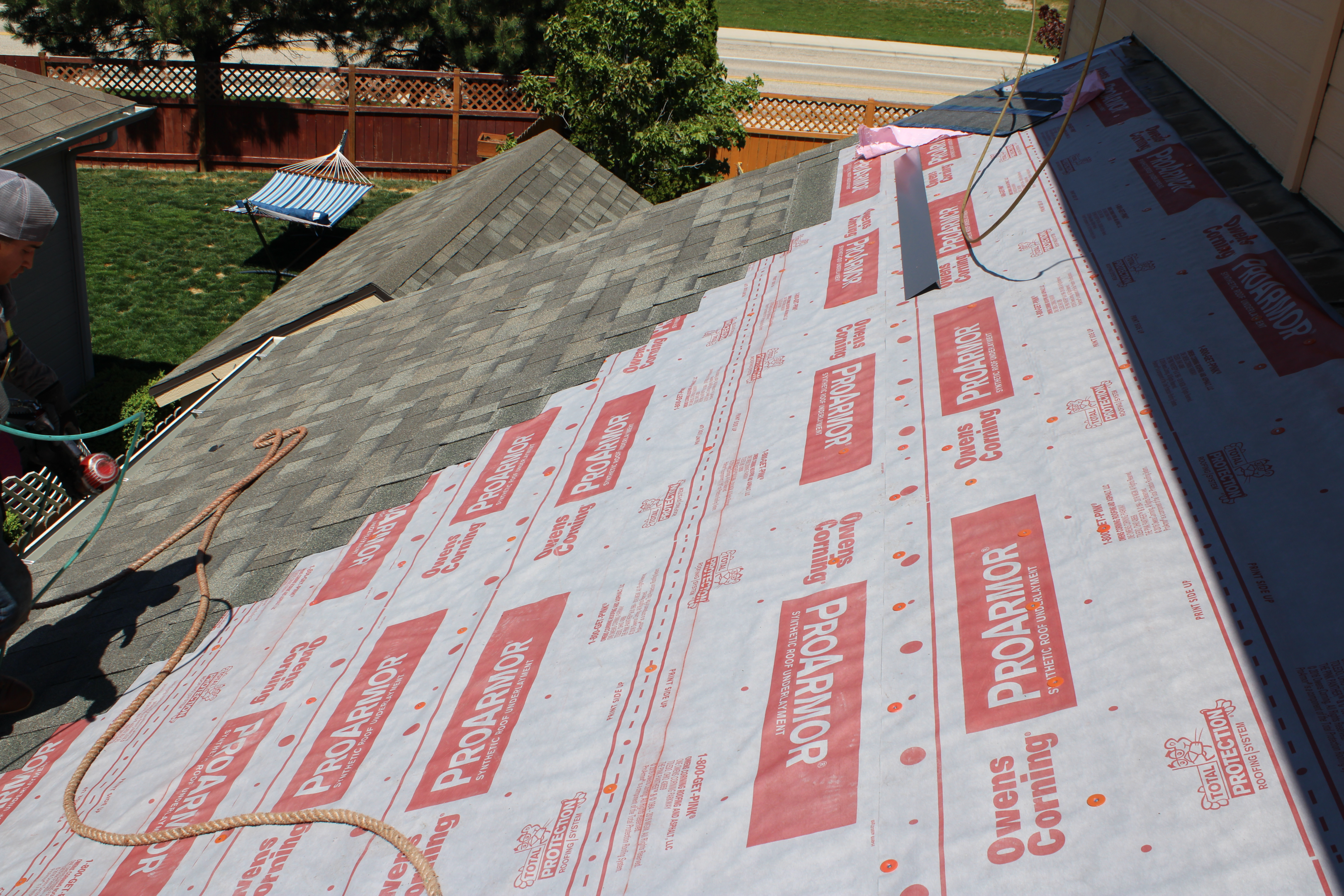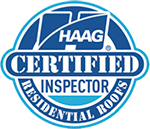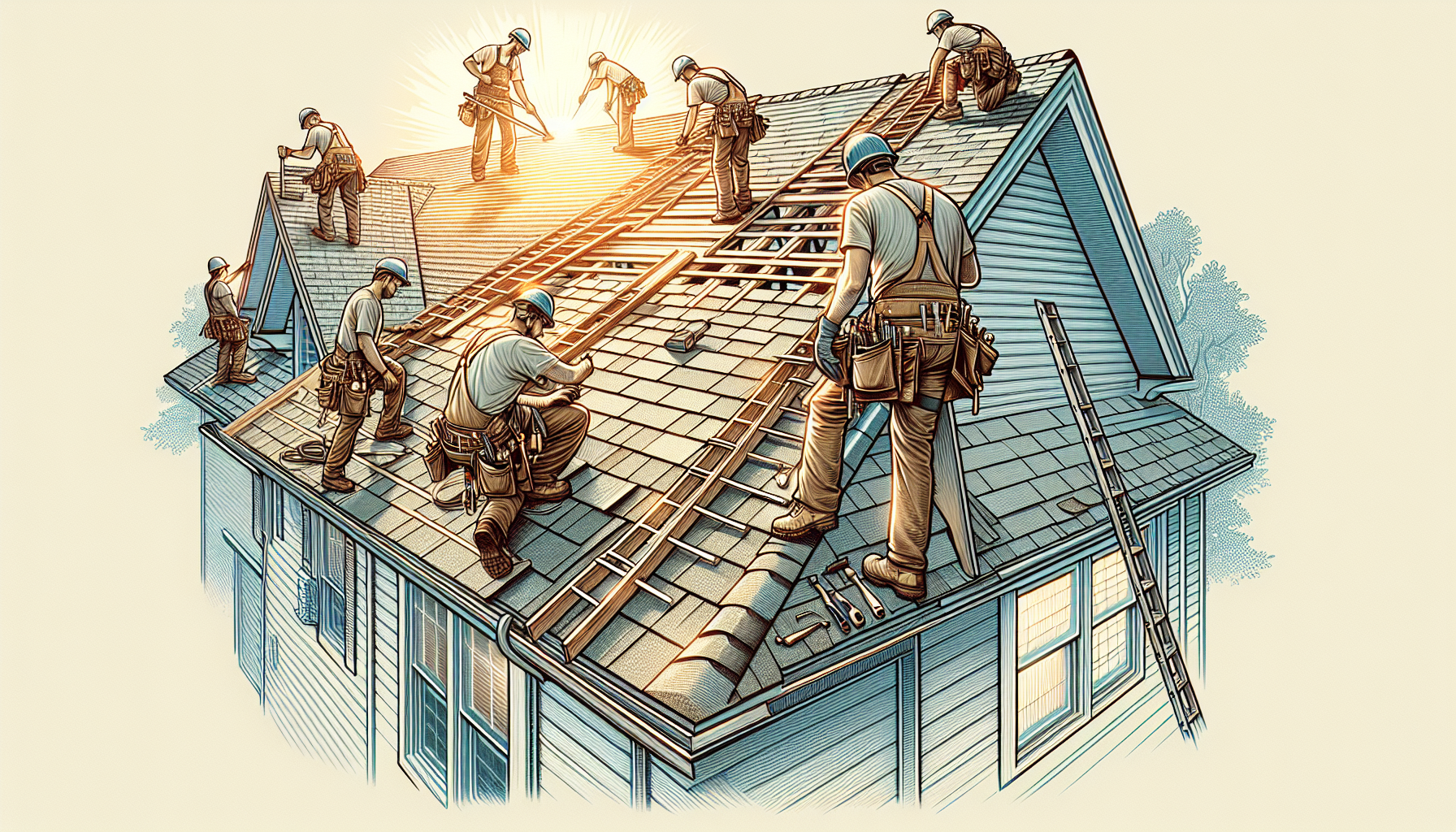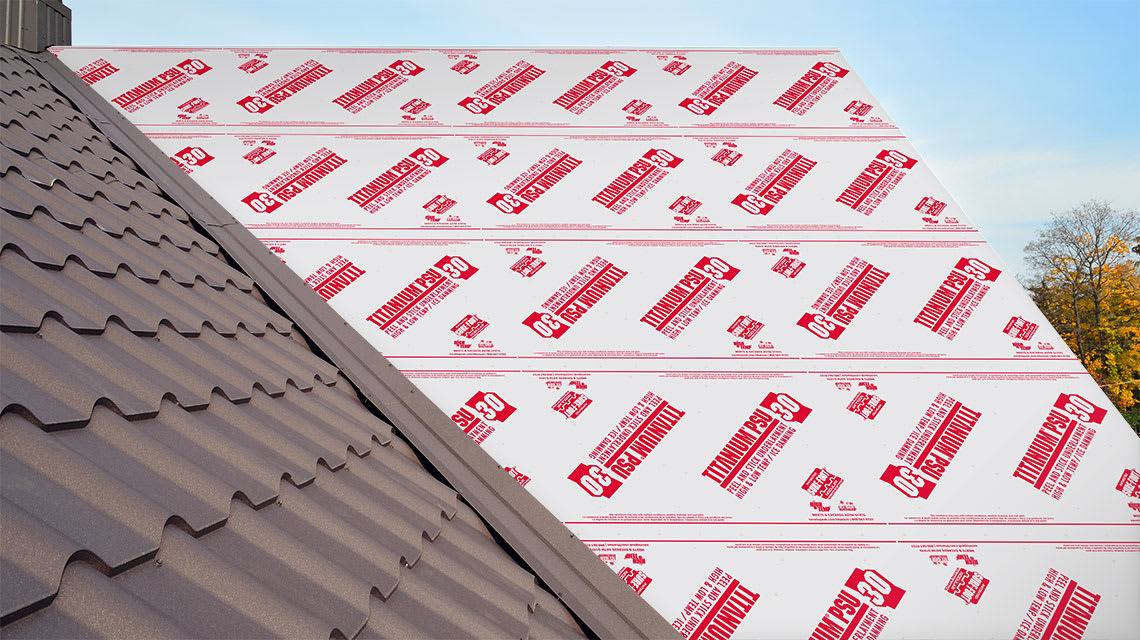Roof underlayment serves as a crucial concealed layer that protects your home from moisture damage while providing support to the shingles on top of it. This article explores its function, examines the various types available, and offers advice on selecting and preserving the most suitable underlayment for your roof.
Key Takeaways
Roof underlayment is like a hidden hero, providing a critical line of defense against moisture and weather damage, even during roof construction or repair.
There are three types of underlayment - asphalt-saturated felt, synthetic, and rubberized asphalt - each with different benefits like breathability, durability, and waterproofing.
The right underlayment choice should consider building codes, environmental conditions, budget, and the roofing material used, plus correct installation and maintenance are vital.
Understanding Roof Underlayment

Viewed as a covert layer of defense, the roof underlayment operates stealthily beneath the roof covering. This critical component is applied right on top of the entire roof deck and takes up arms against moisture that attempts to breach your home’s defenses. Consider this an added layer of armor fortifying your home when storms wage war, leaving roofing shingles compromised or absent due to harsh weather like rainstorms, blizzards, or icy conditions.
More than just a mere shield against inclement weather, the role of roof underlayment is multifaceted, offering indispensable support during the hustle and bustle of installing or replacing a roof—whether it's a brand-new build or some much-needed repairs. It stands guard over every square inch of your roof deck, staunchly defending against water intrusion while the shingles above take a temporary leave or are in the process of being installed. It's this unsung hero that ensures our homes remain snug and dry, even when they're stripped down to their bare bones during renovations.
Yet, there's more to high-quality underlayments than just their role as a guardian against weather patterns. They:
Render a smooth and level canvas upon which overlying shingles (or metal) may lay.
Boost not only curb appeal but also vault aesthetics skyward.
Cement overall structural soundness by maintaining aridity within the wooden substrates beneath them and staving off decay’s corroding grasp.
Types of Roof Underlayment

There are three main types of roof underlayment: synthetic underlayment, asphalt-saturated felt, and rubberized asphalt. These types each bring their own special attributes to the table, providing varying degrees of durability, protection, and affordability for your roof.
Asphalt-Saturated Felt
Asphalt-saturated felt, affectionately known in the industry as tar paper or felt paper, has long been a preferred choice for both homeowners and professionals engaged in roofing projects. The appeal of this material can be attributed to its organic paper fiber mat, which is imbued with asphalt, thus enhancing its capacity to repel water. It is available predominantly in two thickness levels: No. 15 felt and No. 30 felt—the latter being more robust against damage due to its increased density.
One notable advantage of using asphalt-saturated felt on roofs is that it features a semi-permeable nature. Sporting a perm rating between five and seven allows for adequate ventilation within the roof structure while retaining affordability and ease during installation procedures. Notably favorable when applied atop steeply sloped rooftops, No. 30 grade offers augmented endurance making it particularly suited for such applications.
Nevertheless, despite these benefits associated with asphalt-saturated feel underlayment use, there are certain limitations worth considering.
Each layer provides less coverage than comparable synthetic materials could offer. Consequently leading to potential upticks in labor expenditure along with requirements for additional material.
Comparatively speaking, durability falls short relative to other market options.
And lastly, there might be issues achieving uniform flatness post-installation compared to alternative solutions currently available.
We checked with suppliers in Boise and Nampa to see if they sold felt underlayment and we're happy to report no one uses it anymore. With the advent of synthetics, we don't see any data or studies that lead us to believe that felt will be making a comeback anytime soon.
Synthetic Underlayment
As technology advances, so do roofing materials. Synthetic underlayment has emerged as a modern substitute for the once-common natural plant fiber-based traditional roofing underlayment.
Consider these distinctive attributes of synthetic underlayment:
It’s crafted from laminated polypropylene or polyethylene.
The material is flexible, waterproof, durable, and resistant to both UV rays and mold.
Its longevity extends between 25 to 50 years.
This form of underlayment surpasses the conventional felt variety in terms of durability and protection.
Hence, synthetic underlayment is an excellent option for those undertaking roofing endeavors.
Although it may come at a higher price point compared to other options on the market, its extended lifespan coupled with reduced maintenance requirements could balance out that initial investment. Assessing the quality often involves looking at weight—greater weight typically indicates superior products. Diverse varieties are available including non-adhesive styles as well as self-adhesive forms. They also boast moisture resistance, which offers more versatility during installation processes.
Rubberized Asphalt Underlayment
If you are in search of a high-quality, water-resistant underlayment choice, rubberized asphalt underlayment could be the perfect solution. Comprised of a specialized mix that includes asphalt and rubber polymers, this underlayment creates an exceptionally watertight seal for enhanced leak protection. It is especially suited for use in places that typically experience leaks such as eaves, valleys, vents, chimneys, skylights, and roofs with shallow slopes.
Its durability is reflected in the impressive lifespan of rubberized asphalt underlayment, which can last anywhere from 25 years to over 35 years. To cater to different roofing requirements, this type of underlayment is available with a variety of top-layer materials, such as polyester, polyethylene, or granular surfaces.
It is worth mentioning that rubberized asphalt underlayment tends to be more costly due to its composition, which includes a higher concentration of premium materials such as asphalt and rubber polymers, compared to other underlayment options available on the market.
We highly recommend upgrading to this type of underlayment, specifically Owens Corning PSU-30, which is an Ice and Water Barrier underlayment. We recommend it for your eaves, valleys, and around roofing penetrations (vents).
Factors to Consider When Choosing Roof Underlayment

Choosing the right underlayment for your roof requires careful consideration of more than just product features or price. Compliance with local building codes is critical, ensuring that both safety and material standards are met to prevent early roof deterioration and additional hazards. Valley County (McCall, ID) and Elmore County (Mountain Home, ID) do have codes that require very specific types of underlayment and where they need to be installed. We always align with the recommendations for these counties for all Idahoans.
Local regulations aside, it’s important to take into account the specific environmental challenges Idaho roofs face. For example, ice dams are common occurrences, so opting for a waterproof shingle underlayment will save you money from a VERY costly repair. This repair includes taking multiple courses of shingles, the starter shingle, and the current underlayment material down to the decking and starting over with ice and water underlayment, then the starter shingle and field shingles. Ice dams are costly repairs, so please give the best underlayment materials the most consideration.
Aligning your selection with financial constraints and the compatibility with your chosen roofing material is crucial. Not every underlayment pairs well with all types of roofing materials. We'd be happy to walk you through them all.
Installation and Maintenance Tips
Proper installation of roof underlayment is essential for its effectiveness. Consider these important steps to ensure it’s done right.
Begin by installing the underlayment correctly, in sequence with flashings and shingles, aligning accurately along the drip edge using a chalk line as a guide.
Carefully unroll the underlayment to avoid wrinkles or air pockets.
Use staples or suitable fasteners to secure the underlayment firmly in place.
Overlap each course of underlayment by at least four inches for optimal protection.
For added security in critical areas such as valleys and ridges, employ waterproof shingle underlayment. Carefully fold and press down this material to fit appropriately into place. Regular checks are imperative for detecting early signs of buckling, rips, or wear-and-tear—this is especially crucial on parts of roofs that bear more weather exposure like low-slope roofs.
To safeguard against moisture accumulation and damage from ultraviolet light, make sure your roof has adequate ventilation and opt for UV-resistant roofing materials where possible. When assessing repairs needed due to deterioration over time or specific incidents - weigh whether localized fixes will suffice versus needing an entire renewal – all while taking into account the state of your main roof covering system’s condition.
The Role of Roof Underlayment in Energy Efficiency
It is important to recognize that the inclusion of roof underlayment is a key factor in enhancing the energy efficiency of your dwelling. This additional insulation layer plays a vital role in retaining warmth during cold months and maintaining coolness throughout hot periods. Achieving greater building envelope tightness, the trapped still air within a properly sealed roof underlayment acts as an efficient thermal barrier, thus diminishing heat dissipation.
Some materials used for roof underlayments, such as wood fiber boards, possess the capability to absorb and retain heat, which helps balance temperature shifts—this characteristic enhances the overall energy management capacity of your roofing system. By addressing and sealing off gaps that permit thermal leakage, effective use of roof underlayment can lead to considerable savings on energy expenditures by easing demands placed upon heating and cooling units.
Implementing high-quality roof underlayment has implications for reducing interior moisture levels, which contributes to cooler indoor environments. Permeable varieties promote better airflow within attic spaces by enabling hot air release. This promotes home cooling while simultaneously diminishing dependence on mechanical cooling systems like air conditioners.
Common Roof Underlayment Problems and Solutions
Issues with the roof underlayment, such as asphalt-saturated felt, are common. These issues can include:
The felt underlayment tore either during installation or when subjected to high winds.
A decline in the quality of the felt results in it soaking up moisture and subsequent damage to the roof deck.
Over time, especially in warm climates, an increase in fragility and a propensity for absorbing more moisture.
Drying out over time causes the loss of essential oils critical for maintaining resistance against moisture.
It is vital for homeowners to have annual inspections of their roof’s underlayment to ensure its durability and protective qualities.
To address these potential problems, using superior materials combined with proper installation practices can reduce instances of tearing while also preventing excessive exposure to heat and dampness—both factors known to contribute to increased brittleness and vulnerability from water damage. Routine inspections should be carried out so that early warning signs like wrinkles—which may lead shingles astray from lying flat—are caught promptly. This attention helps prevent leaks or additional harm ensuing on your home’s rooftop.
How to Choose a Reputable Roofing Contractor

Selecting a reliable roofing contractor is as crucial as choosing the appropriate underlayment for your roof. Begin by confirming their legitimacy by checking if they have listed a license number on their website, and cross-reference this with the state licensing board. Seek out distinguished professional certifications like Owens Corning Platinum Preferred Contractors, an indication that a contractor ranks within the top 1% of professionals in North America.
Scrutinize their online footprint by reading reviews on platforms such as Google, BBB, or Facebook to evaluate public perception and trustworthiness of their services. It’s vital for them to maintain both an actual office location and provide you with a local telephone contact. These assure adherence to regional building codes and responsibility towards service commitments. Insist upon seeing evidence of insurance from the contractor for your peace of mind regarding liability protection should any accidents occur during project execution.
A good rule of thumb is the longer they have been in business, the safer you are with your investment. Another rule to live by is the lower the contractor number - ask for their "RCE number" - the longer they have been in business.
It’s advisable to solicit quotes from various contractors so you can compare costs effectively while assessing how well each understands what your specific roofing situation demands. Stay away from anyone who pressures you into a sale! Some companies will refuse to leave your home until they contact their manager for a final discount. Do not fall prey to these slimy sales tactics.
Ultimately, the key is to exercise wise judgment—identifying and avoiding contractors who may be untrustworthy or unreliable before becoming entangled in potential roofing project pitfalls.
Summary
The importance of roof underlayment in the preservation of our homes cannot be overstated, and its significance deserves more acknowledgment. When choosing between asphalt-saturated felt, synthetic, or rubberized asphalt underlayment, factors such as adherence to local building codes, environmental challenges, budget, and material compatibility must be taken into account.
Empower yourself with knowledge as a homeowner to make informed choices. Take the time to understand the needs of your roof and choose a suitable underlayment. We can help with this! Follow this by engaging a reliable contractor for accurate installation. Remember, the durability and strength of your roof rely not only on the shingles you see but also on the often overlooked but crucial underlayment – the true foundation of roof durability.
Frequently Asked Questions
What kind of underlayment to use on a roof?
For residential steep-slope roofing applications, it is recommended to utilize synthetic underlayment. The upgrade to full ice and water barrier underlayment is always a wise choice.
What are the different types of roof underlayment?
Three primary varieties of roof underlayment exist: asphalt-saturated felt, synthetic underlayment, and rubberized asphalt underlayment.
Select the type that most appropriately aligns with your roofing requirements.
Subscribe to Idaho Roofing Contractors's Blog








Comments